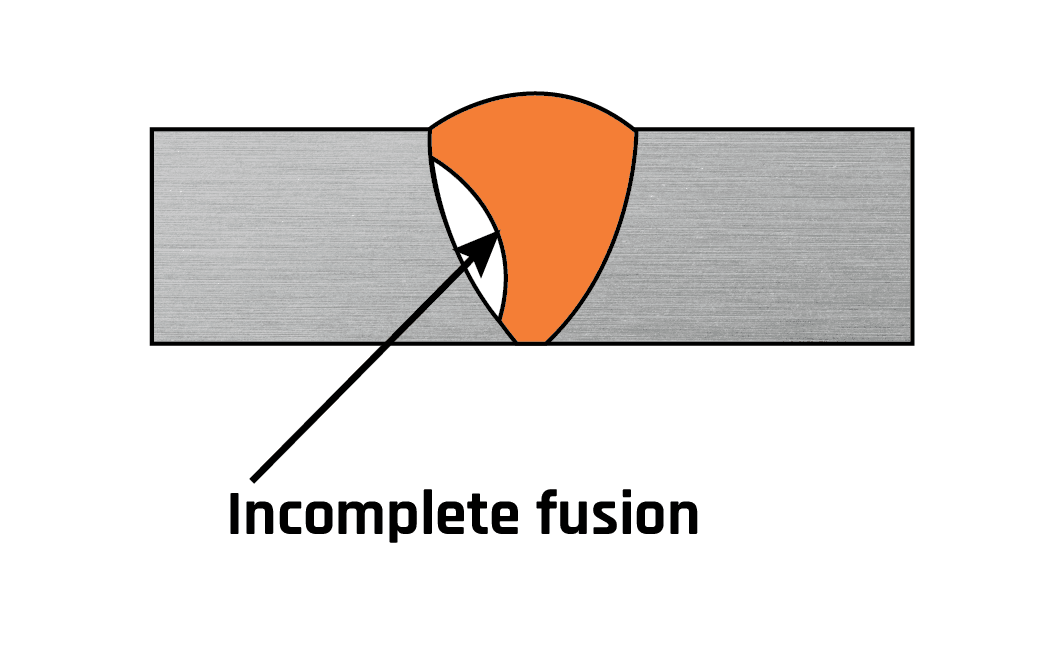Preventing Weld Undercut: Proven Methods Every Welder Must Know
Preventing Weld Undercut: Proven Methods Every Welder Must Know
Blog Article
Recognizing the Causes and Solutions for Undercut Welding in Metal Manufacture Processes
In the world of steel fabrication procedures, the occurrence of undercut welding postures a substantial difficulty that demands a comprehensive understanding of its reasons and practical services. The complex interaction of different aspects throughout welding procedures can result in this unwanted phenomenon, affecting the structural honesty and total high quality of the welded joints - Preventing weld undercut. By studying the source of undercut welding and discovering reliable restorative actions, makers can raise the standard of their handiwork and make sure the production of remarkable steel components
Common Root Causes Of Undercut Welding
Often forgotten in metal fabrication, undercut welding occurs due to different factors that demand careful focus and experience to be properly mitigated. Furthermore, incorrect welding strategies, such as utilizing the incorrect welding angle or take a trip rate, can additionally add to damage development. The option of welding specifications, such as voltage, present, and cable feed rate, plays a considerable function in the incident of undercut welding.
Effect of Incorrect Welding Parameters
Unreliable welding specifications can substantially endanger the stability and high quality of welded joints in metal fabrication processes. The impact of wrong welding criteria shows up in numerous methods, resulting in structural weaknesses and defects in the bonded parts. One essential facet impacted by incorrect welding parameters is the penetration deepness of the weld. Not enough warmth input because of reduced welding currents or excessively high travel rates can lead to inadequate fusion between the base steels, causing insufficient joint penetration and weakened bonds. Alternatively, too much warmth input triggered by high welding currents or sluggish travel rates can cause extreme and burn-through reinforcement, developing a weak and unsteady weld structure. In addition, inaccurate specifications such as incorrect voltage setups or incorrect electrode angles can add to erratic weld grain accounts, lack of fusion, and increased opportunities of issues like damaging. Careful focus to welding parameters is vital to guarantee the manufacturing of high-quality welds with the preferred mechanical properties and structural stability.
Impact of Improper Lantern Angle
Incorrect torch angle in welding operations can considerably affect the high quality and stability of the last weld joints in metal fabrication processes. Damaging is a typical welding problem where a groove forms along the weld toe, weakening the joint and endangering its structural integrity.
A torch angle that is too steep can bring about not enough infiltration, incomplete blend, and raised spatter. On the various other hand, a torch angle that is also superficial can lead to excessive infiltration, burn-through, and distortion of the base material. Preventing weld undercut. Proper lantern angle is necessary for guaranteeing consistent weld top quality, stamina, and appearance
To avoid undercutting and other issues brought on by improper lantern angles, welders need to be trained to maintain the proper torch click this link angle throughout the welding process. Regular surveillance and adjustment of lantern angles during welding can aid achieve audio welds with minimal issues.
Function of Inadequate Welding Strategies

An additional facet of poor welding methods is improper weld prep work. Poor cleansing of the base steels, inaccurate joint style, or insufficient edge preparation can all add to undercut welding. Additionally, insufficient protecting gas protection or using the wrong kind of gas can cause insufficient combination and the development of undercut flaws.
To address the duty of insufficient welding techniques in steel construction processes, it is important to provide thorough training for welders. Appropriate education on welding criteria, joint preparation, and securing gas choice can help protect against undercut welding and make sure premium welds in metal construction projects.
Reliable Solutions for Undercut Welding
Dealing with undercut welding in steel construction requires carrying out effective options to enhance weld top quality and structural stability. One of the main solutions to deal with undercut is to adjust welding specifications such as voltage, existing, and travel rate to ensure appropriate heat input and combination. By fine-tuning these setups, welders can prevent extreme melting of the base steel and filler material, minimizing the likelihood of discover this info here undercut formation.
In addition, proper joint preparation is crucial in preventing undercut. Guaranteeing tidy base steel surfaces devoid of impurities and using the proper bevel angle can aid promote better weld infiltration and lower the risk of undercut - Preventing weld undercut. Employing appropriate welding strategies, such as weaving or oscillating the torch, can likewise help in dispersing warmth evenly and filling the weld joint effectively, decreasing the possibility of undercut problems
Additionally, choosing the proper welding consumables, consisting of electrodes and filler steels, is essential in reducing undercut. Utilizing materials with proper chemical structures and mechanical residential or commercial properties can contribute to attaining sound welds with minimal undercut. Regular assessment and quality control measures ought to also be carried out to spot and deal with undercut problems promptly, making certain the general integrity of produced steel parts.

Final Thought
To conclude, comprehending the causes and remedies for undercut welding in steel construction processes is important for achieving premium welds. By attending to usual reasons such as incorrect welding specifications, improper torch angle, and poor welding methods, welders can stop damaging and guarantee solid, durable welds. It is important to take notice of these elements and carry out efficient services to improve the total welding procedure and end product high quality.

Report this page